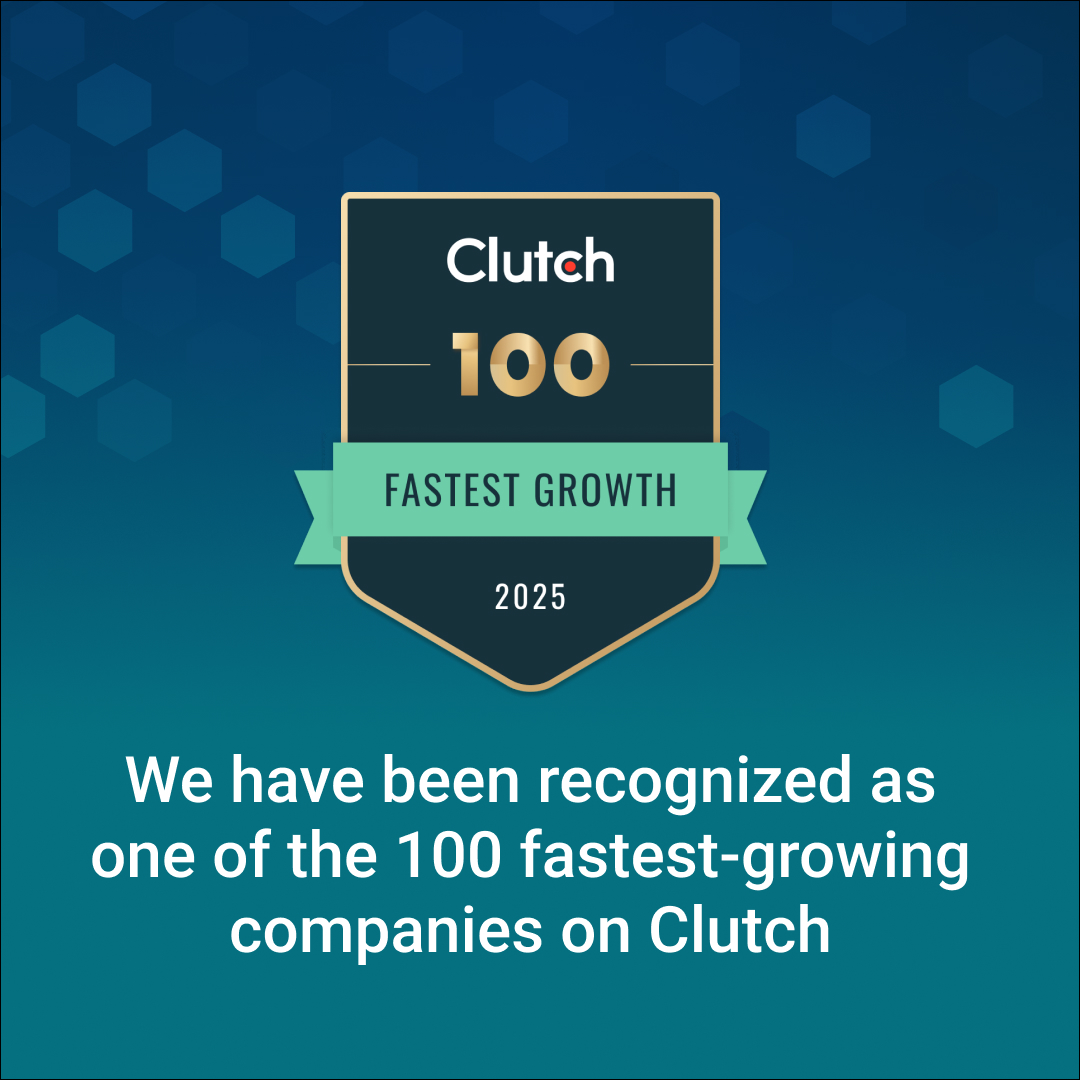In the contemporary business landscape, where capturing consumer attention is both an art and a science, gamification emerges as a transformative strategy. Gamification, the integration of game mechanics into non-game environments, leverages the inherent human love for games to solve problems and engage users.
This technique enriches customer and employee interactions by incorporating elements such as point scoring, competitions, and rule-based engagements into everyday activities, making routine tasks more enjoyable and motivating.
The concept, while seemingly playful, is rooted in deep psychological principles. It taps into basic human drives such as the pursuit of achievement, the need for recognition, and the joy of mastery and control. By embedding these elements into business processes, companies can foster greater participation, enhance user engagement, and drive strong behavioral changes, ranging from improved customer loyalty to enhanced employee performance.
The significance of gamification in the business world cannot be overstated. In a digital era saturated with information and options, businesses face the ongoing challenge of maintaining consumer engagement and loyalty.
Gamification addresses these challenges head-on by transforming mundane interactions into dynamic and memorable experiences. This not only increases the likelihood of repeated interactions but also enhances brand perception and customer satisfaction.
For instance, when applied in customer loyalty programs, gamification can transform a simple point collection scheme into a compelling journey of progress and achievement, encouraging customers to engage more deeply with the brand.
Similarly, in the workplace, gamification can be used to improve employee training programs by incorporating levels, challenges, and badges, thereby making learning more interactive and rewarding.
What is gamification?
It is a technique that has been widely adopted across various sectors, demonstrating its versatility and effectiveness. Gamification in education is particularly noteworthy, where it has been used to increase student engagement and improve learning outcomes.
By introducing game-like elements such as rewards, progress tracking, and competitive leaderboards, educators can make learning more engaging and enjoyable for students.
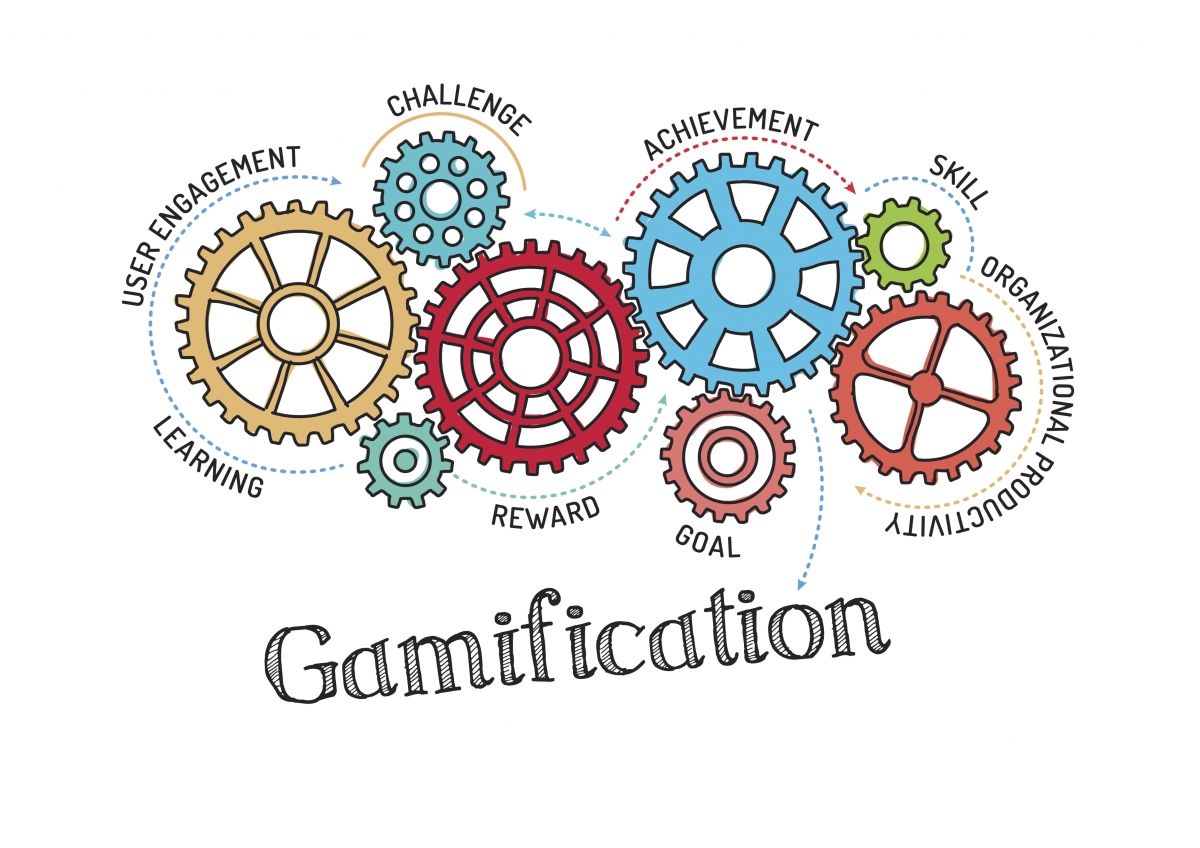
Figure 1: Gamification
The effectiveness of gamification is supported by numerous studies and real-world applications across various sectors—from retail to education and from healthcare to financial services. Companies like Starbucks, Nike, and Duolingo have successfully used gamification to increase customer activity rates, improve educational outcomes, and enhance employee productivity, setting benchmarks in their respective domains.
These gamification examples highlight how businesses can drive significant results by incorporating game mechanics into their strategies. Moreover, the rise of digital technology has only expanded the scope and impact of gamification.
Advanced analytics and real-time feedback systems now enable businesses to tailor experiences to individual users, increasing the relevance and appeal of gamified elements. This personalization not only deepens engagement but also provides valuable data that can be used to refine business strategies and customer interactions further.
Gamification marketing is another area where this technique has proven highly effective. By turning marketing campaigns into interactive and rewarding experiences, businesses can capture consumer attention more effectively and foster brand loyalty. This approach not only attracts new customers but also retains existing ones by making brand interactions more engaging and memorable.
In essence, gamification represents a convergence of technology, psychology, and business strategy, crafted into an engaging format that resonates with the modern consumer’s desire for interactive and rewarding experiences. It is not merely a trend but a sophisticated tool in the strategic arsenal of businesses aiming to thrive in a competitive and ever-evolving market.
As we move forward, the innovative application of gamification is set to redefine the paradigms of customer engagement and corporate productivity, marking a new era in the intersection of business and entertainment.
Starbucks: Pioneering Customer Engagement through Gamification
1.1. Challenges Faced
Maintaining Customer Engagement and Loyalty in a Highly Competitive Market
Starbucks, a global leader in the coffee industry, has continually adapted to an ever-evolving market landscape. However, maintaining customer engagement and loyalty in such a competitive environment has presented several significant challenges.
These challenges have necessitated innovative approaches and strategic adjustments to sustain Starbucks’ market position and ensure continued growth.
Market Saturation and Competition
One of the primary challenges Starbucks faced was market saturation. With over 38,038 stores in 86 countries by 2023, Starbucks’ extensive global presence made it difficult to maintain the novelty and uniqueness that initially attracted customers.
The ubiquity of Starbucks stores meant that customers began to perceive their visits as routine rather than special experiences. This was compounded by the rise of numerous specialty coffee shops and local artisanal brands that offered unique, tailored experiences, which began to attract a segment of Starbucks’ customer base looking for differentiated, personalized service.
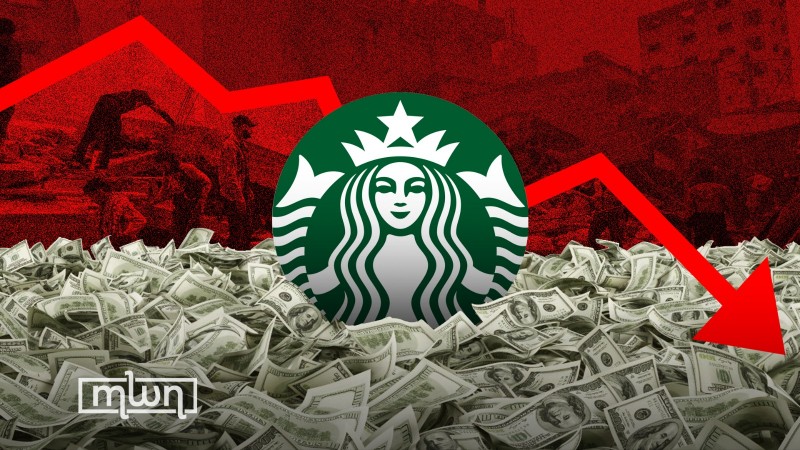 Figure 2: Starbucks challenges
Figure 2: Starbucks challenges
Technological Advancements and Digital Engagement
The rapid advancement of technology also posed a challenge for Starbucks. In the digital era, customers expect seamless integration of technology in their purchasing experiences. Competitors who leveraged advanced digital platforms to enhance customer interactions began to gain an edge.
Starbucks had to invest significantly in developing and maintaining robust digital platforms to meet these heightened expectations. Ensuring the functionality, security, and user-friendliness of their mobile app and digital payment systems required continuous innovation and substantial investment.
Customer Loyalty and Retention
Another critical challenge was maintaining customer loyalty in a market flooded with options. Traditional loyalty programs were no longer sufficient to keep customers engaged. Competitors introduced innovative loyalty schemes that offered more immediate and tangible rewards, thus raising the bar for customer retention strategies.
Starbucks needed to revamp its loyalty programs to offer more personalized and engaging rewards that could foster a stronger emotional connection with the brand.
1.2. Addressing the Challenges
To address these challenges, Starbucks embraced innovation and strategic partnerships. The company enhanced its digital platforms, integrating gamification into its loyalty programs to make interactions more engaging and rewarding.
The Starbucks Rewards program, for example, was revamped to offer personalized experiences and incentives, which significantly improved customer engagement and loyalty.
Furthermore, Starbucks explored new technologies such as augmented reality (AR) and artificial intelligence (AI) to create unique customer experiences. The introduction of AR experiences at select locations and the use of AI to personalize recommendations helped Starbucks differentiate itself from its competitors.
Starbucks’ ability to identify and adapt to these challenges through strategic innovation and technological integration has been key to maintaining its leadership in the highly competitive coffee industry. By continuously evolving its customer engagement strategies, Starbucks has managed to stay relevant and appealing to its global customer base, setting a high standard for others in the industry.
Enhancing Customer and Employee Engagement Through Gamification
Starbucks has distinguished itself through innovative gamification strategies that enhance the customer experience and deepen knowledge and engagement among its employees. The company’s adept use of gamification extends through various programs, each tailored to enrich the interaction between the brand and its customers and staff.
2.1. Program Overview: Starbucks Rewards and Starland
Central to Starbucks’ customer engagement is the Starbucks Rewards program, an initiative that revolutionized loyalty by turning everyday purchases into a rewarding game.
Customers earn “Stars” with each purchase, which they can redeem for free products, custom drink modifications, or unique Starbucks merchandise. This system keeps customers returning, motivated by the tangible rewards they can earn through regular interactions with the brand.
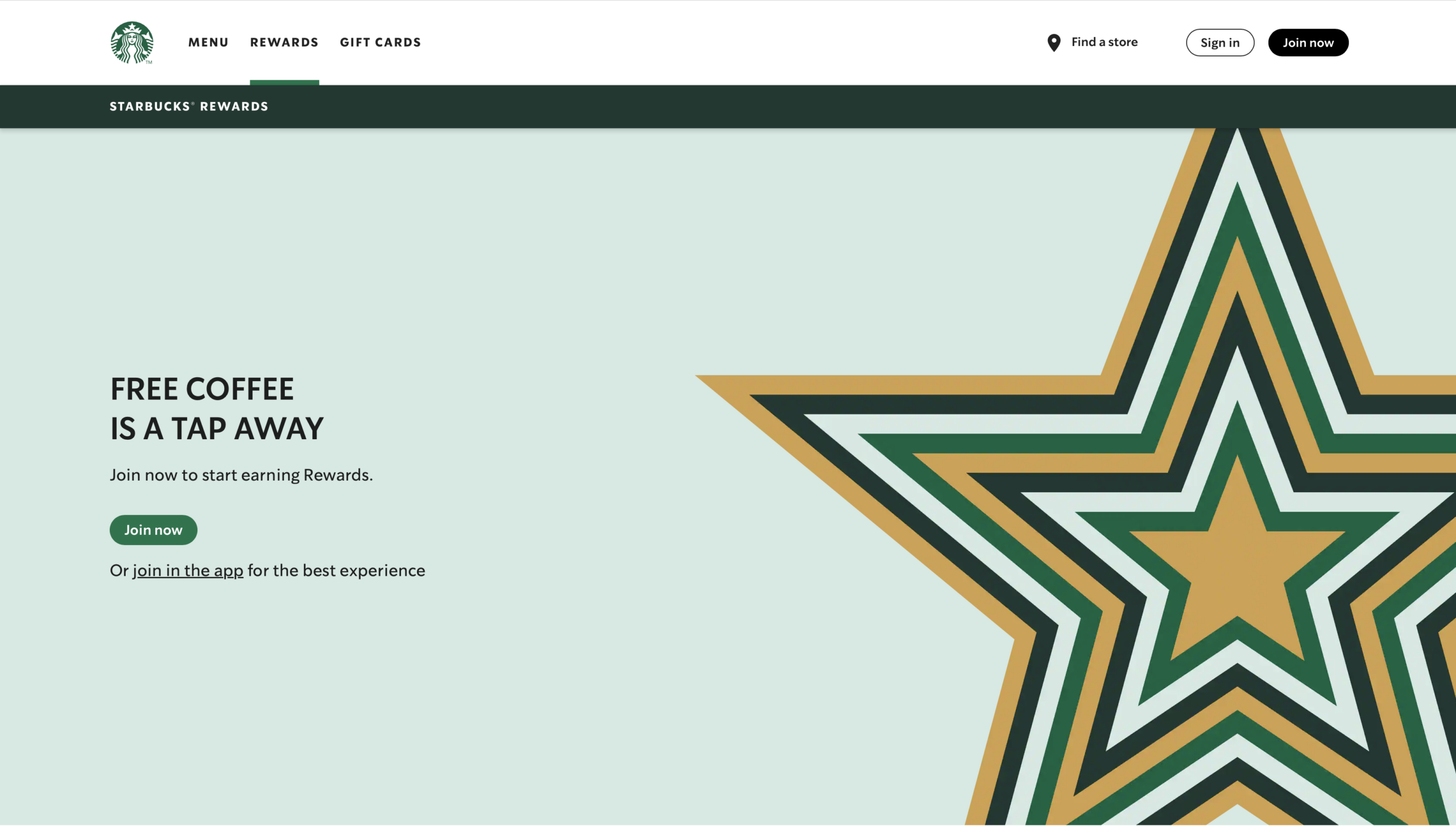
Figure 3: Starbuck’s reward program
A standout feature within this ecosystem is the Starland program, a limited-time interactive experience that further gamifies the earning of Stars. During promotional periods, customers can participate in virtual games and challenges directly through the Starbucks app, earning bonus Stars and exclusive rewards.
This approach not only drives sales but also enhances the digital experience, making each interaction with the app an exciting and rewarding opportunity.
Digital Innovations: The Starbucks Mobile App
Starbucks’ mobile app is a prime example of digital gamification done right. The app integrates order tracking, a personalized rewards system, and mobile payment options, turning the functional act of buying coffee into a seamless and engaging digital experience.
READ MORE: Exploring IT Applications in the E-commerce Industry
The app allows users to customize their orders, save favorite beverages, and even schedule pickups, which caters to the modern consumer’s demand for convenience and personalization.
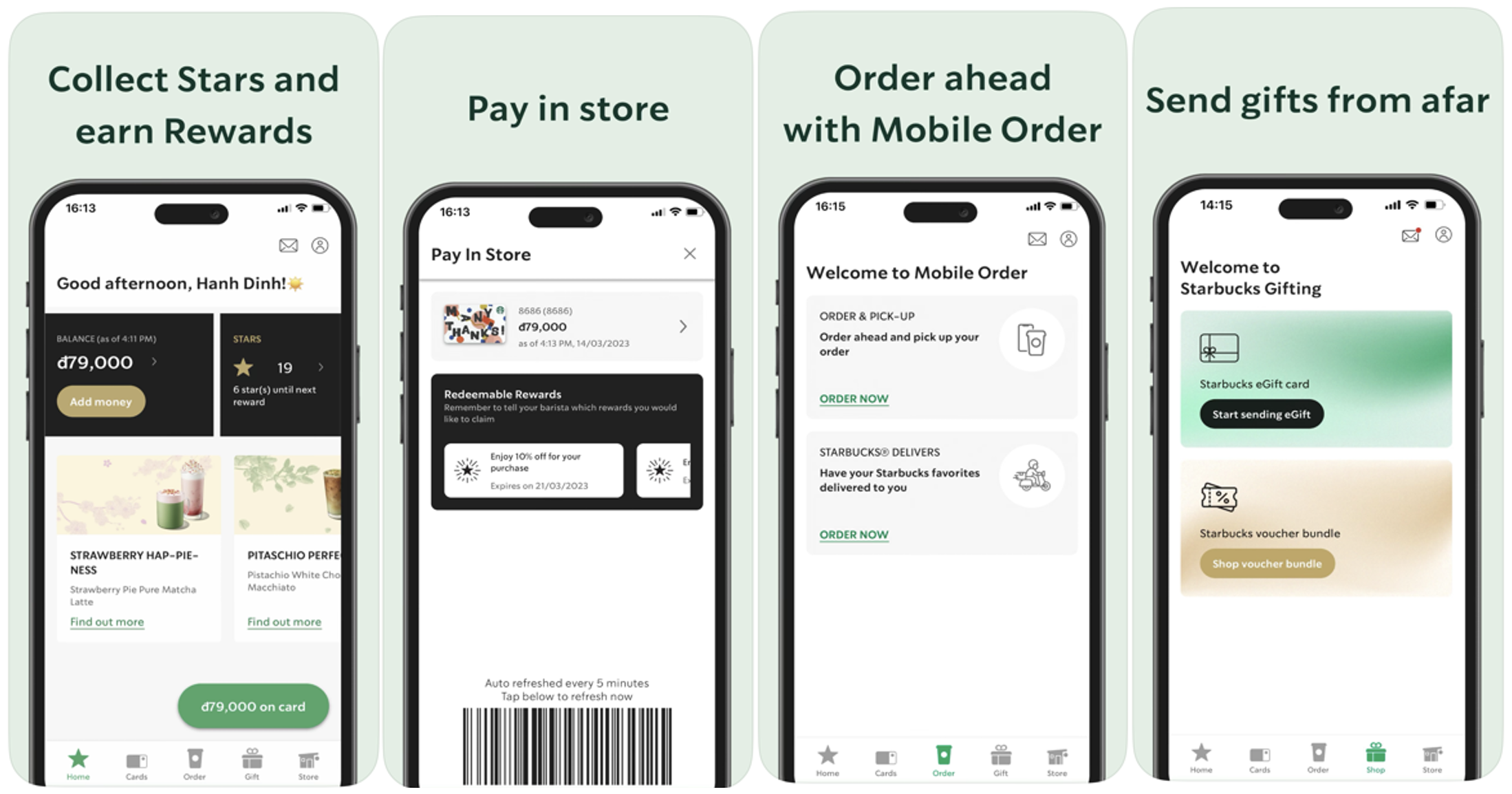
Figure 4: Starbuck’s mobile app
The app’s gamification elements are subtle yet impactful. For instance, it notifies users of new challenges or rewards they might earn, encouraging more frequent visits and interactions. Seasonal promotions and special events are also integrated into the app’s interface, leveraging gamification principles to enhance customer engagement through time-sensitive challenges and rewards.
Educational Engagement: Coffee Master Program
Starbucks also applies gamification internally through its educational initiatives, notably the Coffee Master program. This program is designed for baristas and coffee enthusiasts working at Starbucks, offering them an opportunity to deepen their knowledge of coffee origins, brewing techniques, and flavor profiles.
Participants in the Coffee Master program go through a series of educational modules, at the end of which they earn a distinctive black apron as a symbol of their expertise and achievement.
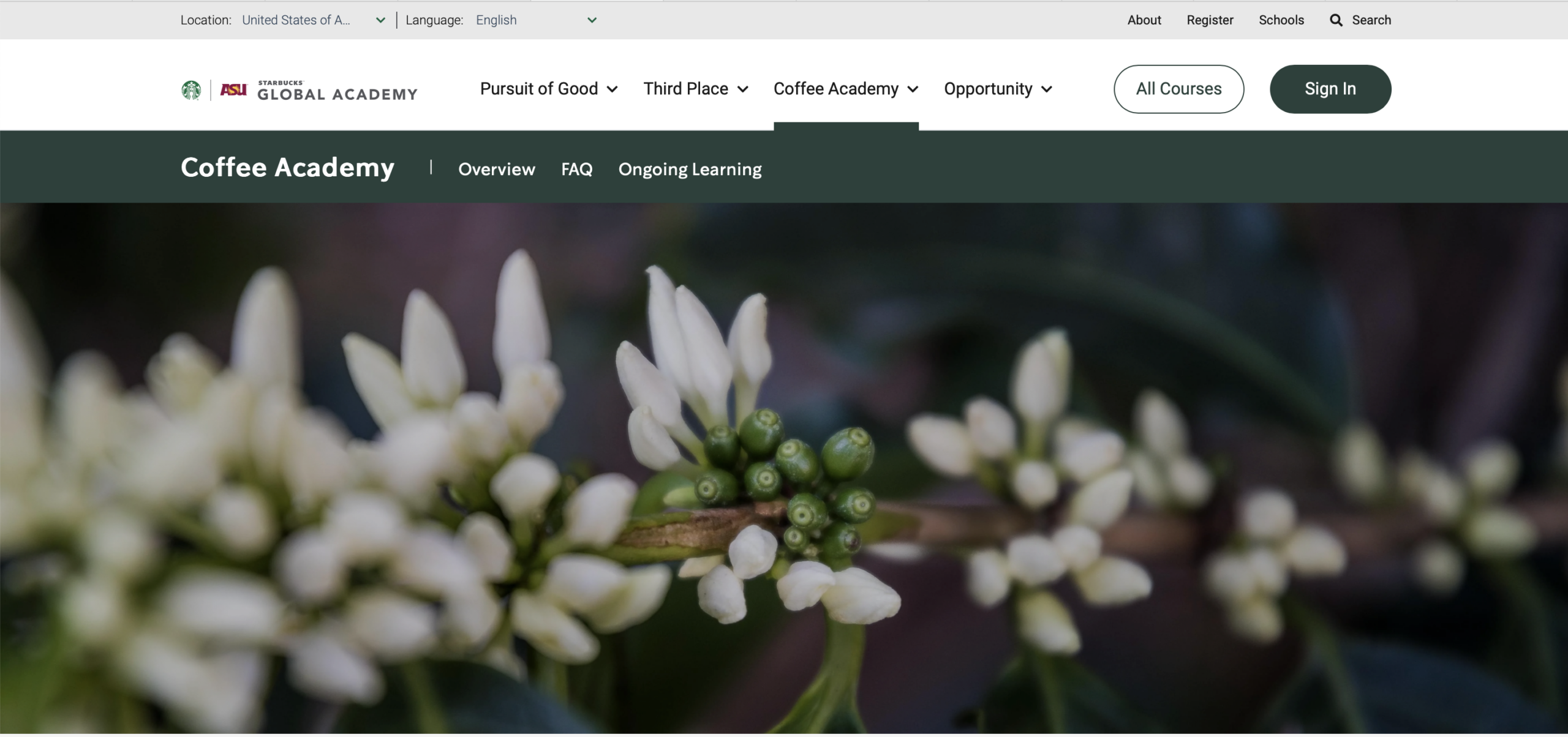 Figure 5: Starbucks Coffee Master Program
Figure 5: Starbucks Coffee Master Program
The gamification of this learning process makes education engaging and rewarding for employees. It fosters a sense of accomplishment and pride among participants, which translates into better customer service and a more knowledgeable staff.
By empowering employees with expert knowledge and recognizing their efforts, Starbucks enhances the overall quality of service and customer interaction in their stores.
Through these gamified strategies, Starbucks has not only managed to keep its vast customer base engaged but has also fostered an enthusiastic and well-informed workforce. The integration of gamification into both consumer-facing and internal processes showcases Starbucks’ commitment to innovation and excellence in the coffee retail sector.
These efforts have successfully enhanced the brand’s appeal, customer loyalty, and market presence, setting a high standard for retail gamification.
Impact and Results of Starbucks’ Gamification Strategies
Starbucks’ gamification strategies have significantly bolstered its brand engagement, customer loyalty, and sales performance, showcasing a compelling case of digital innovation in retail.
Here’s a detailed look at the impact and results based on the provided metrics:
Customer Engagement
Starbucks has effectively leveraged its Rewards program and mobile app to enhance customer engagement significantly. The Starbucks Rewards program saw a 13% year-over-year increase in active memberships, reaching an impressive 34.3 million in the U.S. alone by early 2024.
Additionally, the Starbucks mobile app, which integrates order tracking, a personalized rewards system, and mobile payment options, has facilitated over 30% of all transactions through mobile orders in the recent fiscal quarter. This high level of digital engagement underscores the success of Starbucks’ gamification efforts in maintaining customer interest and interaction.
Sales and Loyalty
The gamification initiatives have had a pronounced impact on Starbucks’ financial performance, with the company reporting a 20% increase in global comparable store sales.
Notably, Starbucks Rewards members tend to spend 2-3 times more than non-members, demonstrating the effectiveness of the loyalty program in boosting sales and customer retention.
This increased spending by members is a significant contributor to the overall revenue growth, which saw a consolidated net increase of 8%, reaching a record $9.4 billion.
Brand Connection
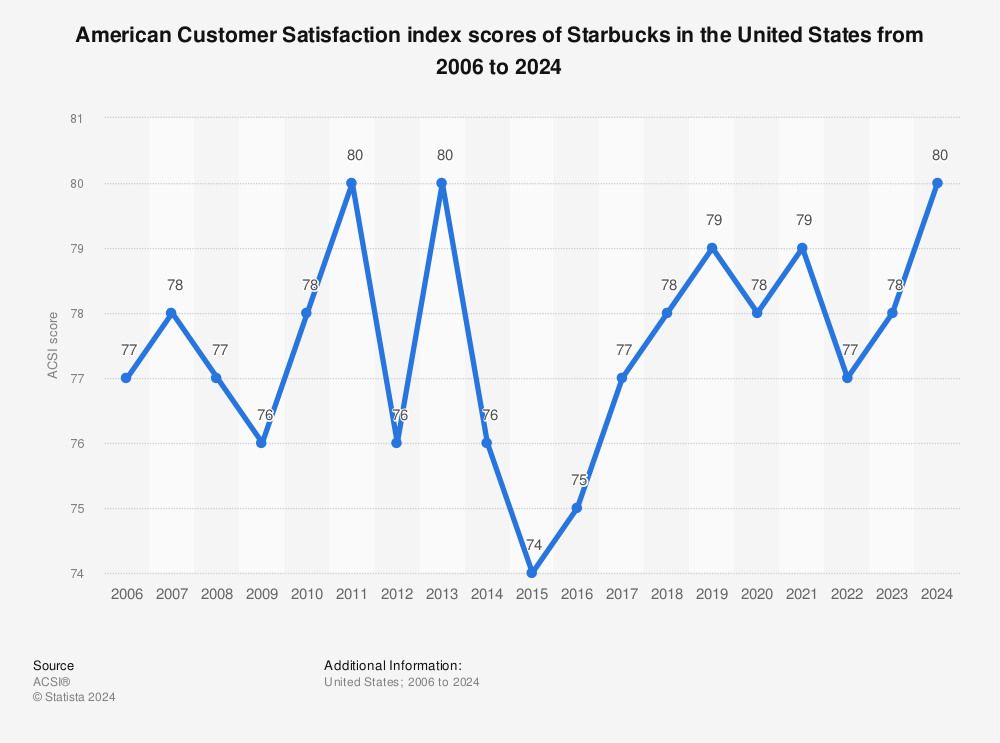
Figure 6: American Customer Satisfaction Index scores of Starbucks in the United States from 2006 to 2024 (ACSI®., 2024)
Starbucks’ commitment to enhancing the customer experience through educational and engaging initiatives like the Coffee Master program has strengthened its brand connection. This is reflected in its American Customer Satisfaction Index (ACSI) score, which stood at 80 in 2024, marking a two-point increase from the previous year.
These initiatives not only improve service quality but also deepen the emotional connection customers feel with the brand, further evidenced by the substantial 44% customer retention rate, significantly higher than the industry average of 25%.
Mobile App Usage
The Starbucks app’s popularity is another testament to the brand’s strong digital strategy. Nearly two-thirds (61.4%) of Starbucks guests use the app, primarily for ordering ahead or paying in-store.
This widespread adoption has positioned Starbucks as a leader in mobile payments within the United States, highlighting the app’s integral role in enhancing customer convenience and satisfaction.
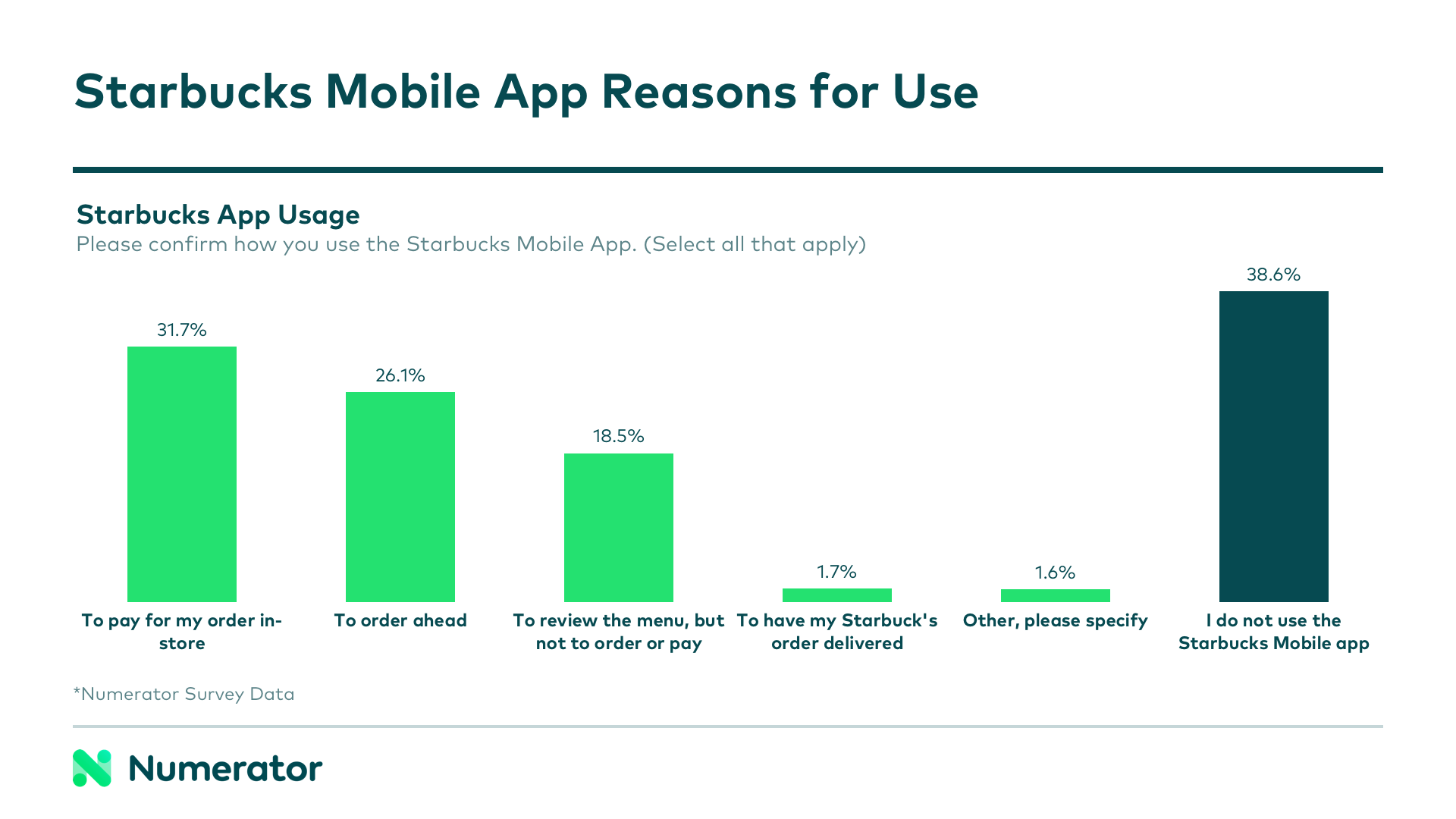
Figure 7: Starbucks Mobile App Reasons for Use (Yee, 2019)
Starbucks’ strategic use of gamification through its loyalty programs and digital platforms has not only increased customer engagement and sales but has also solidified its reputation as an innovative leader in the coffee industry.
By continually adapting to consumer preferences and integrating technology into everyday interactions, Starbucks has set a high standard for customer engagement and retention in the retail sector.
Future Innovations in Starbucks’ Gamification Strategy
Looking ahead, Starbucks is poised to further innovate its gamification strategies to adapt to new market trends and technologies. One promising direction is the expansion of augmented reality (AR) and virtual reality (VR) experiences.
Starbucks has already begun exploring AR, particularly at the Starbucks Reserve Roastery in Shanghai, where customers can enjoy an immersive AR experience that enhances their understanding and enjoyment of the coffee-making process. Extending such experiences to more locations can provide unique value propositions that differentiate Starbucks from its competitors.
Artificial intelligence (AI) and machine learning (ML) also hold significant potential for further personalization of the Starbucks experience. By leveraging AI and ML, Starbucks can recommend relevant products to customers based on their preferences and behaviors, thus enhancing customer satisfaction and loyalty.
Expanding partnerships with other brands could enhance the Starbucks Rewards program. The global coffee alliance with Nestlé has already brought a wide range of products to market, including Starbucks capsules for the Nespresso and Nescafé Dolce Gusto systems. Similar partnerships with companies in other sectors, such as travel, retail, and entertainment, could further enrich the rewards ecosystem and attract new customers.
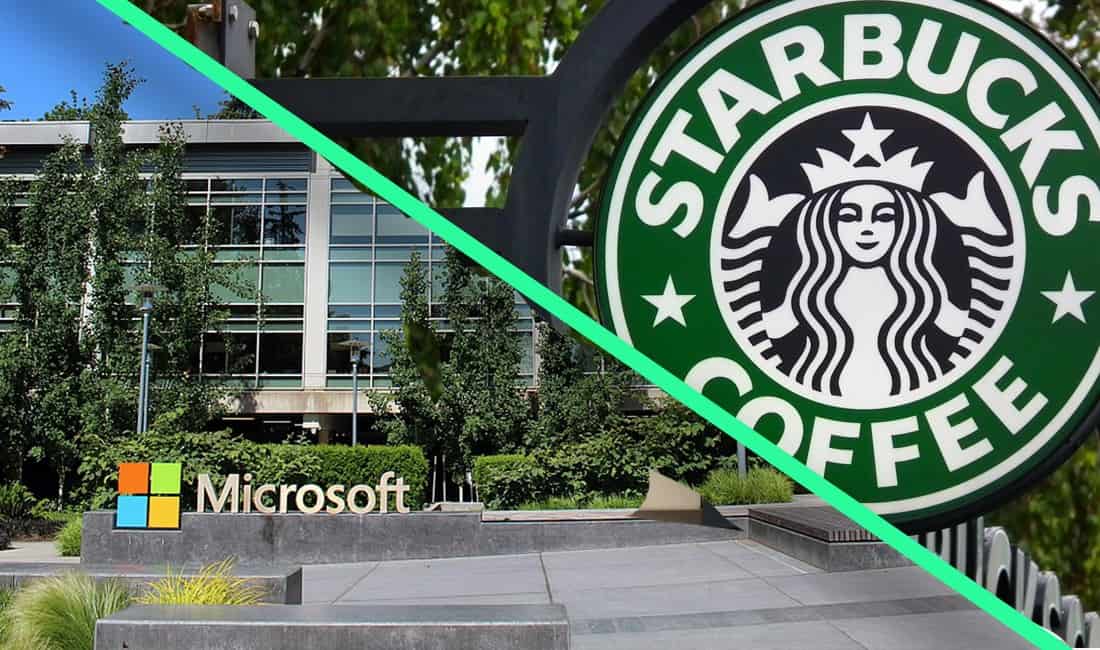 Figure 8: Starbucks and Microsoft collab
Figure 8: Starbucks and Microsoft collab
Moreover, Starbucks is working with Microsoft to develop a blockchain-based supply chain tracking system, which allows customers to trace the journey of their coffee beans from farm to cup. This technology enhances transparency and builds trust, appealing to consumers who value ethical sourcing and sustainability.
In conclusion, Starbucks’ gamification strategies have set a high standard for customer engagement and business performance. As the company continues to innovate and adapt to new technologies and market trends, it is well-positioned to maintain its leadership in the global coffee industry, delivering unparalleled experiences that resonate with customers and drive sustained growth.
See the Starbucks Success? Let’s Make Yours Happen—Contact SmartDev
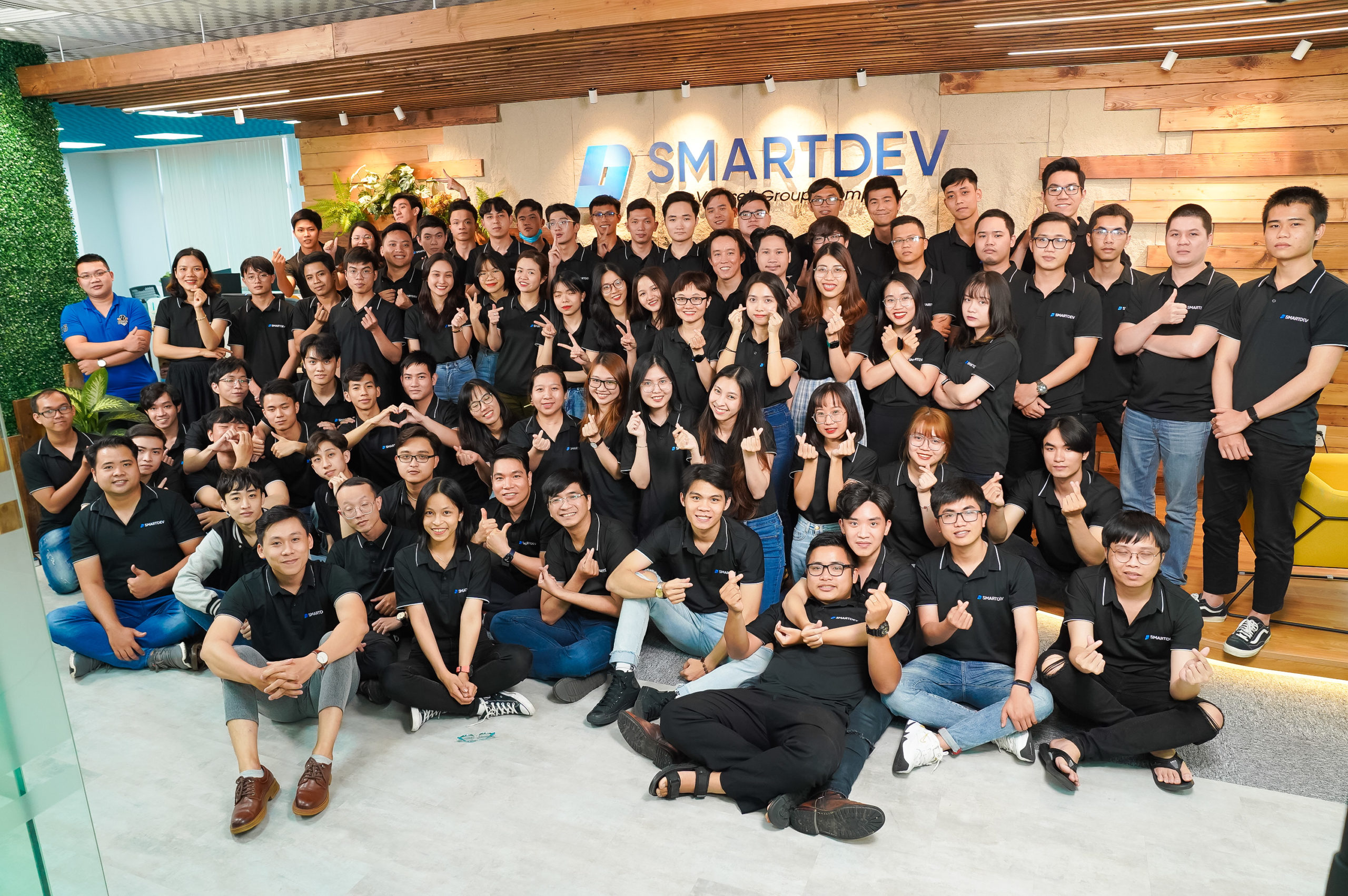
At SmartDev, we are committed to leveraging the principles of gamification to develop innovative solutions that meet the highest standards of engagement and performance. We invite businesses, innovators, and technology enthusiasts to engage with us and explore how our gamification services or partnerships can drive transformation and deliver substantial business value.
Let’s collaborate to harness the full potential of gamification and create solutions that are not only engaging but also secure, scalable, and aligned with your strategic goals. Contact SmartDev today to embark on your gamification journey, and together, we will shape the future of customer interaction and digital experiences. Read our case studies now to learn more.


